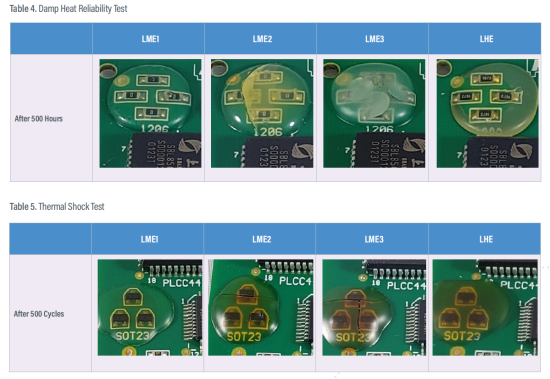Encapsulants are often required to protect electronic components against moisture, chemicals, and rapid and extreme temperature changes while providing mechanical support and electrical insulation. Light-curable encapsulating compounds can provide significant benefits over conventional technologies, including very fast curing, lower operating costs and increased productivity driven by lower labour requirements, space savings, lower energy demand, and high throughput. They are also “green”, being solvent free, or what we call 100% solids.
Technical advances have enabled the use of a secondary moisture cure, which cures any material in shadowed areas not exposed to the UV light. This allows the benefits of a UV light cure pcb encapsulant in applications where geometry might have previously precluded it. Concerns about uncured material underneath components, for example, are alleviated.
Dymax’ White Paper High-Performance, Light and Moisture Dual-Curable Encapsulant discusses the performance of one new formulation of this type of technology against other similar types in reliability tests such as heat and humidity resistance (85ºC/85% RH), thermal shock resistance (-55ºC to +125ºC) and corrosion resistance against salt spray and other chemicals.
Damp heat and thermal shock tests were carried out
The new formulation with dual-cure UV light and moisture capability proved to have superior performance over the others tested. And it doesn’t require cold or frozen shipping and storage. If you are looking to specify an electronics encapsulant, then this will give you the confidence to evaluate this technology. Read the White Paper.
Categories: electronics, encapsulation, technical resource

